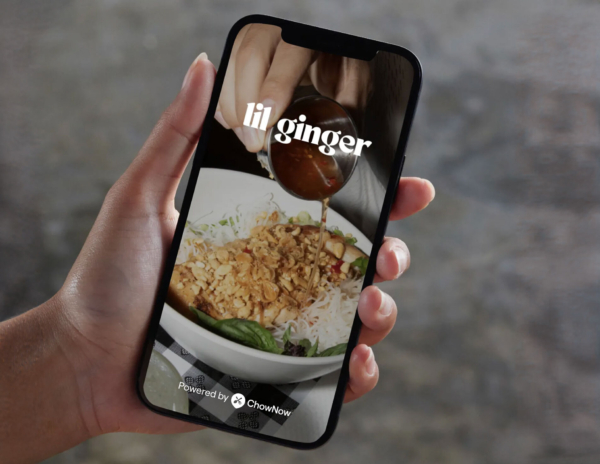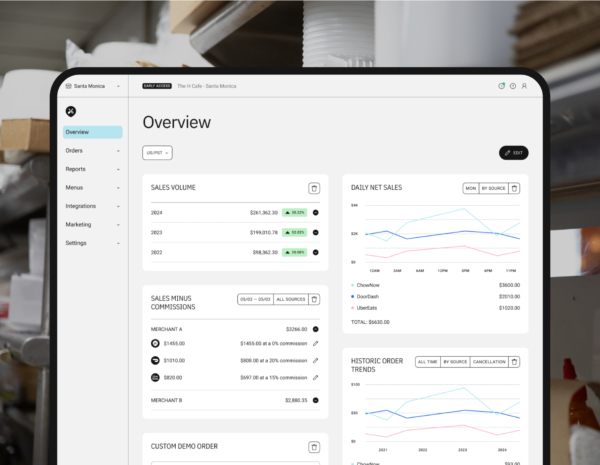Restaurant Tablet Best Practices: Smart Strategies For Success

Tablets are everywhere in restaurants these days, and with good reason.
Their sleek design and intuitive user interface make them a natural fit for a modern restaurant’s day-to-day operations.
From managing reservations at the host stand or firing orders straight to the kitchen from table side, tablets are changing the way restaurants run.
But here’s the thing: just handing your employees a tablet and hoping for the best doesn’t work.
To really get the most out of your tablets, you need to be strategic about how you choose them, use them, and train your staff.
In this guide, you’ll learn:
- How to select tablets that are the right fit for your restaurant
- All the different ways tablets are being used in restaurants every day
- The dos and don’ts of restaurant tablet best practices
Selecting the Right Tablets for Your Restaurant
Not all tablets are built for the pace and chaos that comes with working in a restaurant.
Before you spend the money and roll out a dozen new tablets across your front of house and kitchen, it’s worth asking:
Are these things actually built for the job?
Let’s break down what to look for in a restaurant tablet.
Choose tablets built to survive restaurant life
A tablet that lives in a restaurant needs to be able to take a beating.
It’s going to get dropped, splashed with sauce, and maybe knocked off the bar by a customer’s purse—that’s just part of the deal.
Look for tablets that are built to handle spills and rough handling—whether that means a ruggedized case or a waterproof design out of the box.
Slim and stylish is fine, but in a restaurant, function beats form every time.
Also, look for a tablet that has a strong battery life.
Make sure your tablets work with your existing systems
Before choosing a particular tablet brand for your business, make sure it actually works with the POS system and other systems you already use.
Too many operators find themselves stuck with hardware that doesn’t play nice with their tech stack.
That leads to a ton of wasted time constantly trying to create workarounds, and your staff will feel that frustration every shift.
When in doubt, call your software provider and ask which tablets they recommend—and which ones to avoid.
Pick tablets your team (and guests) won’t struggle to use
A powerful tablet is useless if your staff dreads using it.
Choose a system with an intuitive, easy-to-navigate interface—something your servers, hosts, and managers can pick up and use without a steep learning curve.
Bonus points if the interface is also customer-friendly, especially if you plan to use tablets for self-ordering or digital menus.
How Restaurants Use Tablets in Daily Operations
Tablets are one of those amazing tools that can be used in both front and back of house, helping your team work faster and smarter so your business can make bigger profits.
Here’s how tablets are being used every day in the restaurant business.
Tablets can streamline tableside ordering
Instead of scribbling on notepads or trying to memorize multi-modifier orders, servers can fire tickets directly from the table to the kitchen.
That means fewer errors, faster service, and no more wasted steps running back and forth to a POS terminal.
It also gives servers more face time with guests—and less time scrambling in front of a screen. That adds up to a better customer experience and fewer misfires during the dinner rush.
Give your guests a better menu experience
Digital menus are easier to update in real-time, so it’s simple to 86 an item (even in the middle of service) or update your specials for the weekend.
Tablets allow your menu to have photos, ingredient details, and allergen info so guests can make informed decisions and feel confident when ordering.
Research from Cornell University found that 70% to 80% of consumers appreciate guest-facing technologies like self-service kiosks and tabletop tablets, making digital menus not only practical, but also something diners enjoy using.
Plus, an interactive menu feels modern and engaging, especially to younger diners who are already used to browsing everything on a screen.
Speed up the payment process and make tipping easier
Being able to process payments tableside can be a game-changer. Guests can pay the moment they’re ready, split checks without confusion, and even tip with a few taps.
No more waiting for the server to bring the bill, disappear, and come back with the card reader.
For staff, it means faster table turns and fewer logjams around the POS.
For guests, it’s a smoother customer experience and more in line with what they’ve come to expect from modern dining.
Keep walk-in traffic moving and reservations organized
At the host stand, tablets replace clunky clipboards and guessing games with real-time reservation and waitlist tools, significantly enhancing restaurant efficiency.
You can see table availability and wait times at a glance, adjust seating plans on the fly, and give guests accurate wait times without overpromising.
Some systems even let guests add themselves to the waitlist remotely, which can smooth out foot traffic and reduce walk-offs during busy periods.
Consolidate your delivery apps onto a single screen
Let’s talk about tablet chaos—that designated countertop area cluttered with multiple devices for Uber Eats, DoorDash, Grubhub, etc. Each with its own notifications, dings, and order screens.
It’s a nightmare.
The fix?
A centralized delivery tablet or software order aggregator that funnels all third-party orders into one place. It can reduce errors, speed up fulfillment, and give your kitchen one screen to watch instead of five.
Clean, simple, and way less stressful.
To learn more about order aggregation, read our article How Food Delivery Aggregators Help Restaurants Grow and Streamline Operations.
Staff Training and Engagement
Even the best restaurant technology falls flat if your team doesn’t know how—or want—to use it.
Let’s discuss the most efficient way to get your team up to speed.
Build training into your onboarding and daily operations
Tablets might feel intuitive to a lot of your staff, but that doesn’t mean everyone will pick it up quickly.
Make tablet training part of your onboarding process, and give your team time to practice using them before they’re tossed into a rush.
Walk staff through common tasks like taking orders, splitting checks, updating table status, and managing delivery orders.
You don’t want your Saturday night shift to be the first time someone tries to comp an item or adjust an order after it’s been fired.
The goal isn’t just to teach button-pushing—it’s to build confidence.
Ask your team what’s working (and what’s not)
Your staff will be using your tablets the most, which means they’ll spot tech issues and patterns in tablet usage faster than anyone. If something feels clunky or slows them down, they’ll feel it the moment they’re in the weeds.
If your team doesn’t have a way to share feedback, they’ll find workarounds, and that’s when mistakes happen and customers get frustrated.
The fix is to create a feedback loop. Ask servers, hosts, and kitchen staff how the tablets are working.
Are there screens they never use?
Are there functions they wish the tablet had?
Is something causing bottlenecks?
You don’t have to implement every suggestion, but showing your team that their input matters builds trust—and helps you improve your system where it actually counts.
Dos and Don’ts of Restaurant Tablet Best Practices
Here’s a quick list of what to lean into—and what to avoid—when building tablet workflows for your restaurant.
Do: Regularly update your tablet software
Those software updates your system keeps pushing? Don’t ignore them.
Updates aren’t just about new features—they’re often packed with security patches, bug fixes, and performance improvements.
Running outdated software can slow everything down, cause crashes, and open you up to vulnerabilities, especially on devices that handle payments.
Set aside time each week (or shift it to a slower part of your day) to make sure every tablet is up to date.
Don’t: Overload your menu with a wall of text
Just because you can include detailed descriptions on your digital menu doesn’t mean you should.
Nobody wants to scroll through a paragraph that reads like an instruction manual to figure out what’s in your pasta.
Keep menu item descriptions tight, highlight key ingredients or allergens, and let high-quality photos do the rest.
A clean, readable menu makes it easier for guests to make decisions—and gives your team increased efficiency and customer satisfaction.
Do: Use tablets to gather feedback
The end of the meal is a perfect moment to check in—and tablets make that seamless.
Set up a quick feedback prompt before or after payment. It could be as simple as a one-question survey or a star rating system.
This gives guests a low-pressure way to share their thoughts, and it gives you real-time insight into what’s working (or not) in your service.
It’s faster than comment cards and easier to track.
Don’t: Neglect staff tablet training
Tech is only helpful if your team knows how to use it.
Every staff member—whether they’re full-time, part-time, or just covering a shift—needs to know the basics: how to enter an order, process a payment, find a table in the system, and troubleshoot a frozen screen.
If someone’s learning on the fly during a rush, mistakes will happen. Build training into your onboarding and make it part of your ongoing ops rhythm.
For more tips on training, read our article How to Train Your Restaurant Staff on New Systems Without Slowing Down Service.
Do: Consolidate all delivery platforms onto one tablet
There’s no reason to juggle three different tablets for three different delivery apps.
Use an order aggregator, a platform that lets you route all third-party orders through one interface.
It cuts down on clutter, minimizes missed orders, and keeps your kitchen focused on execution—not flipping between screens.
Don’t: Compromise on tablet security
If you’re accepting credit card payments or storing customer data, you need to lock things down. Use strong passwords, enable encryption, and restrict access to settings and sensitive info.
Also, be mindful of where tablets are left when not in use. A lost or stolen device can quickly turn into a security risk.
Tablets might look sleek, but they’re protecting customer data.
Best Practices Turn Tablets into Powerful Tools
When used correctly, tablets have the power to support your entire team—streamlining online orders, turning tables faster, and giving customers a better experience.
Book a demo with ChowNow to learn how Order Aggregation supports best practices by clearing the clutter and putting all your online orders in one easy-to-manage place.
Restaurant Tablet Frequently Asked Questions
What are the benefits of using tablets in restaurants?
Tablets help reduce order errors, improve service speed, support contactless payments, and enhance customer engagement with features like digital menus, feedback prompts, order aggregation and real-time updates.
What should I look for when choosing restaurant tablets?
Look for tablets that are durable, water-resistant, have long battery life, and are compatible with your existing POS and restaurant software. Ensure the interface is intuitive for staff and guests.
What is tablet order aggregation in restaurants?
Tablet order aggregation combines orders from platforms like DoorDash, Uber Eats, and Grubhub into one system. This prevents tablet clutter and reduces order errors by giving staff one centralized screen to manage all third-party orders.
Do restaurant staff need tablet training?
Yes. Staff training is critical for successful tablet implementation. Employees should be trained on tasks like taking orders, handling payments, and managing delivery apps to ensure smooth service and reduce mistakes.





